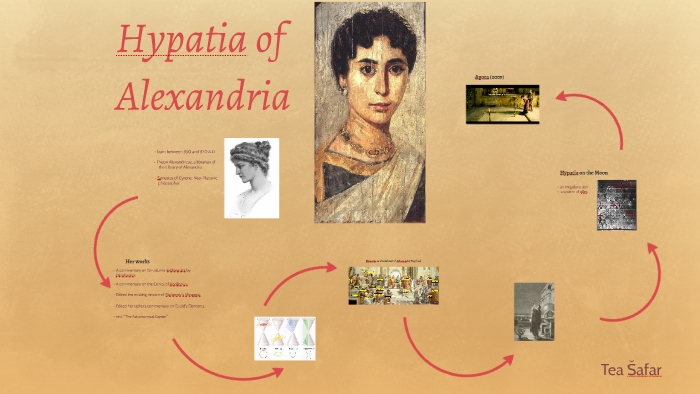
One of the earliest known mathematicians was Thales of Miletus (c. 624–c.546 BC); he has been hailed as the first true mathematician and the first known individual to whom a mathematical discovery has been attributed. He is credited with the first use of deductive reasoning applied to geometry, by deriving four corollaries to Thales' Theorem.
Baudhayana (fl. c. 900 BCE) is the earliest known mathematician from India and is possibly the first mathematician in the world. He was the first to calculate the value of Pi. Pythagoras's theorem today is already found in Baudhayana sutras which were written several years before the age of Pythagoras.
The number of known mathematicians grew when Pythagoras of Samos (c. 582–c. 507 BC) established the Pythagorean School, whose doctrine it was that mathematics ruled the universe and whose motto was "All is number". It was the Pythagoreans who coined the term "mathematics", and with whom the study of mathematics for its own sake begins.
The first woman mathematician recorded by history was Hypatia of Alexandria (AD 350 – 415). She succeeded her father as Librarian at the Great Library and wrote many works on applied mathematics. Because of a political dispute, the Christian community in Alexandria punished her, presuming she was involved, by stripping her naked and scraping off her skin with clamshells (some say roofing tiles).
Science and mathematics in the Islamic world during the Middle Ages followed various models and modes of funding varied based primarily on scholars. It was extensive patronage and strong intellectual policies implemented by specific rulers that allowed scientific knowledge to develop in many areas. Funding for the translation of scientific texts into other languages was ongoing throughout the reign of certain caliphs, and it turned out that certain scholars became experts in the works they translated and in turn received further support for continuing to develop certain sciences. As these sciences received wider attention from the elite, more scholars were invited and funded to study particular sciences. An example of a translator and mathematician who benefited from this type of support was al-Khawarizmi. A notable feature of many scholars working under Muslim rule in medieval times is that they were often polymaths. Examples include the work on optics, maths, and astronomy of Ibn al-Haytham.
The Renaissance brought an increased emphasis on mathematics and science to Europe. During this period of transition from mainly feudal and ecclesiastical culture to a predominantly secular one, many notable mathematicians had other occupations: Luca Pacioli (founder of accounting); Niccolò Fontana Tartaglia (notable engineer and bookkeeper); Gerolamo Cardano (earliest founder of probability and binomial expansion); Robert Recorde (physician) and François Viète (lawyer).
As time passed, many mathematicians gravitated toward universities. An emphasis on free thinking and experimentation had begun in Britain's oldest universities beginning in the seventeenth century at Oxford with the scientists Robert Hooke and Robert Boyle, and at Cambridge where Isaac Newton was Lucasian Professor of Mathematics & Physics. Moving into the 19th century, the objective of universities all across Europe evolved from teaching the "regurgitation of knowledge" to "encourag[ing] productive thinking." In 1810, Humboldt convinced the King of Prussia to build a university in Berlin based on Friedrich Schleiermacher's liberal ideas; the goal was to demonstrate the process of the discovery of knowledge and to teach students to "take account of fundamental laws of science in all their thinking." Thus, seminars and laboratories started to evolve. Wikipedia
 Archimedes in the Middle Ages
by
Marshall Clagett
Archimedes in the Middle Ages
by
Marshall Clagett
 The mathematicall praeface to the Elements of geometrie of Euclid of Megara (1570)
by
Dee, John, 1527-1608.
The mathematicall praeface to the Elements of geometrie of Euclid of Megara (1570)
by
Dee, John, 1527-1608.
 Sir Isaac Newton's mathematick philosophy more easily demonstrated with Dr. Halley's account of comets illustrated. Being forty lectures read in the publick schools at Cambridge. By William Whiston, ... In this English edition the whole is corrected and i
by
Whiston, William, 1667-1752.
Sir Isaac Newton's mathematick philosophy more easily demonstrated with Dr. Halley's account of comets illustrated. Being forty lectures read in the publick schools at Cambridge. By William Whiston, ... In this English edition the whole is corrected and i
by
Whiston, William, 1667-1752.
 A Source Book in Mathematics
by
David Eugene Smith
A Source Book in Mathematics
by
David Eugene Smith
 A Source Book in Mathematics, 1200-1800
by
D.J. Struik
A Source Book in Mathematics, 1200-1800
by
D.J. Struik
 The world of mathematics; a small library of the literature of mathematics from Aʻh-mosé the scribe to Albert Einstein
by
Newman, James R. (James Roy), 1907-1966 editor.
The world of mathematics; a small library of the literature of mathematics from Aʻh-mosé the scribe to Albert Einstein
by
Newman, James R. (James Roy), 1907-1966 editor.
Florida Atlantic University Libraries
777 Glades Road
Boca Raton, FL 33431
(561) 297-6911
